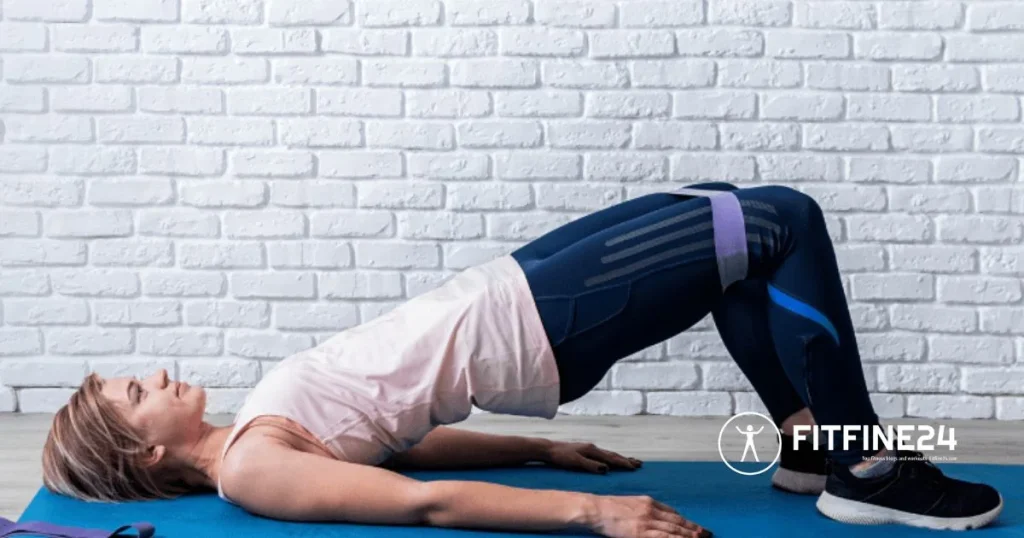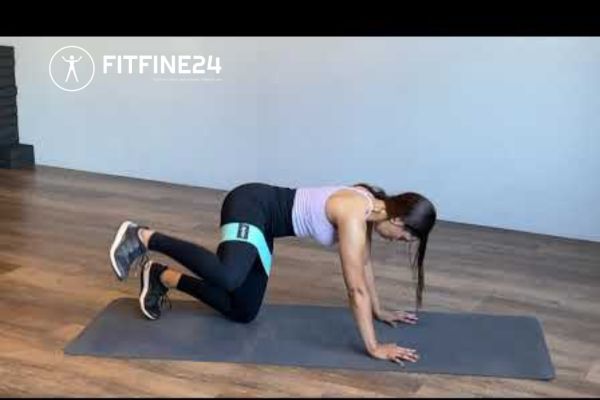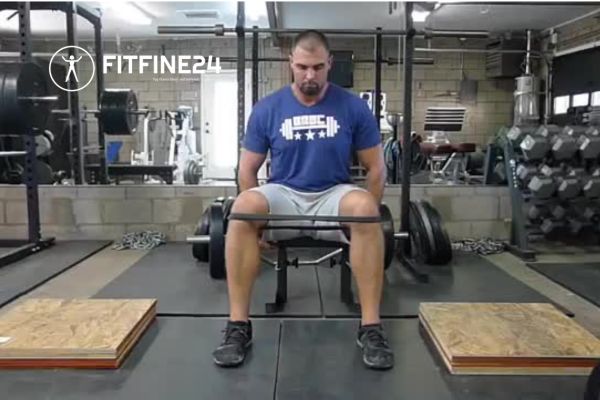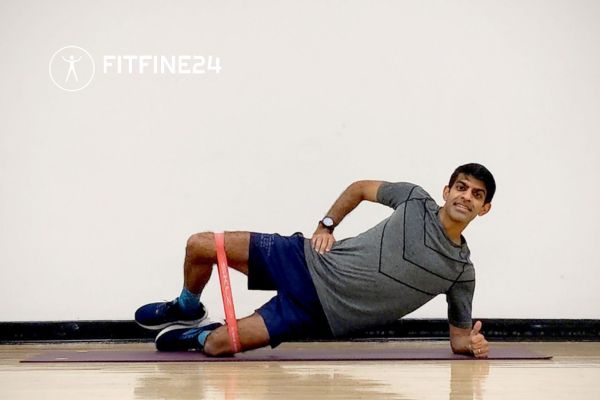
Band Hip Abductions are workouts that help to build and tone the glute and hip area. The hip abductors are the prime movers in this workout and are important in maintaining balance and preventing injuries. In this guide, we will discuss various uses and benefits of band hip abductions, principles of performance and guidelines, variations, and some big ideas to help you reach your goals.
What Are Band Hip Abductions?
In-band hip abductions, resistance bands are used around the thighs and hips of the user to activate certain muscles. This can be accomplished by placing a resistance band on the legs and performing certain movements within the band to create tension and work the hip abductors, gluteus medius, and minimus. This exercise is commonly performed as part of rehabilitation, injury prevention, and functional training exercise programs.
Benefits of Band Hip Abductions

Strengthens Hip Abductors:The primary muscles that are exercised during band hip abductions include the gluteus medius and minimus which are the major muscles responsible for hip abduction (moving the leg away from the body). Doing so enhances the stability of the hips which is very important in daily activities involving movements like walking, running, and use of stairs.
Improves Glutes Development: Band hip abduction exercises are specifically designed to emphasize the outer glutes, which as a result will yield strong and toned glutes. This exercise aids in movements such as squats and lunges where the entire glute musculature is exercised by moving the larger muscles while isolating the smaller stabilizer ones.
Maintains Balance and Stability:The strengthening of the hip abductors ensures an increase in the body’s balance and stability. This is crucial when it comes to athletes or people who are in rehabilitation after some injuries. It also neutralizes lower body strength asymmetries that predispose to lower limb or even lumbar pathologies.
Minimizes Injuries: A weak hip abductor may result in detrimental biomechanics resulting in movement compensations that increase the chances of sustaining injuries, especially in the knees and the lumbar region. Band hip abductions help to resolve the issue of muscle imbalances, improve mobility, and minimize the risk of developing injuries.
Convenient and Portable Resistance:Bands are light in weight as well as portable and can be utilized in almost any environment. Band hip abduction exercises can be adapted to the schedule and routine of domestic workouts making them helpful to busy people or those who prefer fitness in the confines of their homes.
Muscles Worked During Band Hip Abductions
In the process of performing band hip abductions, the primary worked muscles are the following

Gluteus Medius: The gluteus medius participates in pelvis stabilization during the movements including walking and running among other activities. It also assists in strengthening the hip joint hence lowering the chances for injuries.
Gluteus Minimus: Gluteus minimus assists the gluteus medius with young stability and synergies during hip abduction. It provides the necessary support to the hip region during movements.
Tensor Fasciae Latae (TFL):The TFL and the glute muscle particularly assist each other in giving the desired range of motion as they support the pelvis position and the lower limbs’ movement. Enhancing this muscle increases the activity of the hips in a way that enhances the range of motion.
Proper Form and Technique for Band Hip Abductions
To perform band hip abductions the way they are meant to and make the most out of them these steps have to be observed

Choose the Right Resistance Band: The tension of the band should be effective enough to pose a challenge, but light enough in a way that you will maintain your form. The band should be made in such a way that due to being stretched, it offers slight resistance.
Positioning the Band: You can place the band just above your knees for a beginner version or go slightly advanced by changing the band position to around your ankles. Alternatively, you can use a long band or loop band to encircle your legs.
Starting Position:Stand with both legs directly under your hips and your back held straight. You might want to involve your core musclesin this exercise. Use the wall for support if you find it hard to balance.
Executing the Abduction
With one leg fixed on the floor, move the other leg sideways by pushing against the band, which offers resistance. Make sure no movement occurs at the hips and the upper part of the body remains vertical throughout the exercise.
Nothing special aside from making a short break at the top of the movement where you would bring the leg down to its initial position.
Repetitions: Target several 12-15 repetitions for each leg. Do at least 2 – 3 sets and ensure the quality of the workouts is consistent.
Types of Resistance Band Hip Abduction Exercises

Standing Band Hip Abductions This is the standard version of the exercise that involves performing the abductions while standing. A support either of a wall or chair may also be applied to achieve the needed stability.
Seated Band Hip Abductions To perform the hip abductions while sitting, the band should be placed in a way that it is resting on the knees with its feet flat on the ground. Separating the knees as far outwards as the band allows and bringing them back after a few seconds. It works even with the small flexors of the hip improving the muscle targeting.
Lying on your side with a band placed around both thighs, Lift your top leg but keep your core firm and the hips stacked on top of each other and extend the top leg up to the ceiling. This variation gives a more focused contraction to the glute muscles. Place a band over your thighs and take a squat position after which you will be taking lateral steps. With the band around your thighs walk sideways keeping the band in a taut position as you move laterally. This variation primarily works on the hip abductors in addition to the quads and glutes.
Tips for Maximizing Results
Focus on Form It is essential to maintain proper form to fully utilize the benefits and fiche activities of band hip abductions. Maintain level hips as you do not allow swinging of the leg or any other motion other than to fully appropriate the leg up.
Increase Resistance Gradually When you feel you are strong enough, then you can slowly turn up the resistance of the band. A lighter band is always suggested first, and eventually tougher resistance will be used as your strength increases.
Add to Your Routine Band hip abduction is an amazing exercise that can be added to the entire lower body or total body workout. It can be done before the main workout as a warm-up, an adjunct exercise, or during recovery from an injury.
Combine With Additional Exercises to Learn to Enhance Glute Strength and Shape For better results, incorporate other glute exercises, such as squats, lunges, and deadlifts with band hip abductions. This will give a balanced approach to developing different portions of the lower region.
The Importance of Repetition Concentrate on band hip abductions regularly if strength and muscle tone are the targeted areas for improvement. If you want to get optimal outcomes, make sure to include them in your weekly training routine at least 2-3 times.
End note
Band hip abductions also help in strengthening hip abductors and enhancing lower body stability and is an exercise that is simple and easy to perform. Be it related to boosting sports performance, injury prevention, or stronger glutes, the addition of band hip abductions might bring about a change worth noticing. For more tips and other fitness-related techniques, go to fitfine24 and navigate to the Fitness Blogs section.

